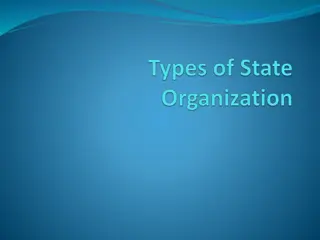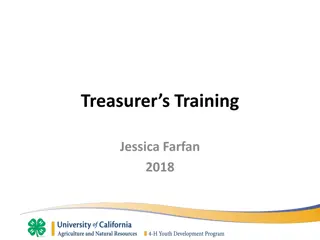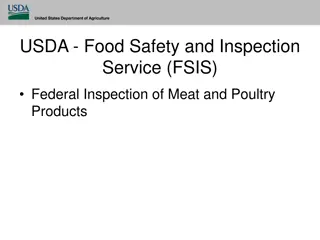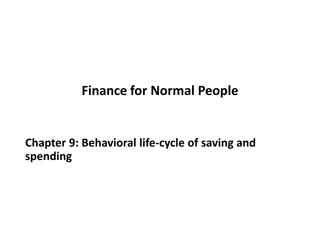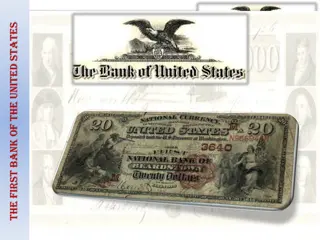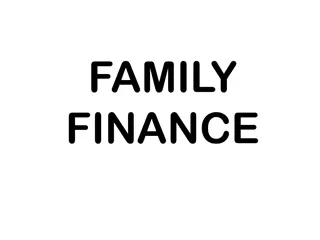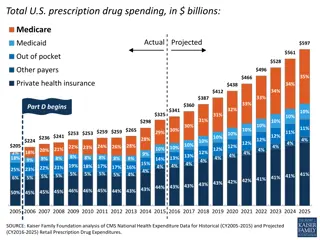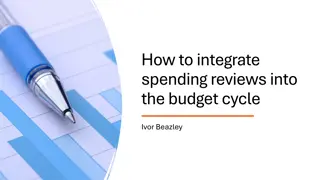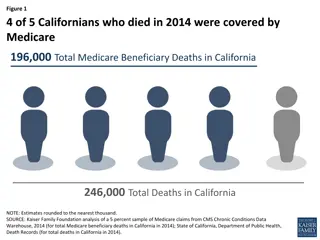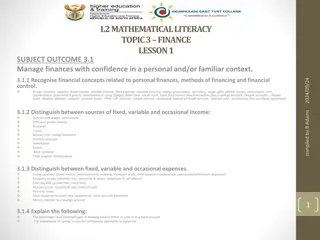Managing Finances in the United States: Creating a Spending Plan
Explore the importance of creating a spending plan to cover basic living needs, care for family, purchase desired items, and manage financial obligations or debts. Learn about different types of expenses, frequency of occurrence, and how to start creating a personalized spending plan based on your income and expenses. Dive into a case study featuring Dani, illustrating practical financial management in real-life scenarios.
Download Presentation

Please find below an Image/Link to download the presentation.
The content on the website is provided AS IS for your information and personal use only. It may not be sold, licensed, or shared on other websites without obtaining consent from the author.If you encounter any issues during the download, it is possible that the publisher has removed the file from their server.
You are allowed to download the files provided on this website for personal or commercial use, subject to the condition that they are used lawfully. All files are the property of their respective owners.
The content on the website is provided AS IS for your information and personal use only. It may not be sold, licensed, or shared on other websites without obtaining consent from the author.
E N D
Presentation Transcript
Your logo here Managing Finances In the United States Managing Finances In the United States Creating a Spending Plan Creating a Spending Plan Presented by:
Managing Finances Managing Finances Creating a Spending Plan Creating a Spending Plan Why Create a Spending Plan? Ensure that you can: cover your basic living needs care for your family purchase items you want pay financial obligations or debts
What Type of Expenses Will I Have? What Type of Expenses Will I Have? Write Down Your Expenses What type? Fixed expenses - stays the same each month (Examples: car, rent) Flexible- changes depending on your spending (Examples: food, gas, medical) Periodic- happens only occasionally throughout the year (Examples: car inspection, haircut) Unexpected unplanned expenses (Examples: doctor s visit, car repairs) Spending Categories are groupings of similar types of expenses (Examples: debt, savings goals, medical, utilities, insurance) How often do these expenses occur? Weekly-gas, food Monthly- car payment, rent Quarterly- car insurance, life insurance
Meet Dani Meet Dani - - A Case Story A Case Story Dani lives in the U.S part-time and has family in his/her home country. Dani has come to the U.S. to help support his/her family and pay down some debt that occurred coming to the United States. Weekly gross wages are $450. Dani shares a house with other farmworkers; they share the housing expenses. One of the housemates owns a car and often drives Dani to the store or into town when needed. Dani contributes by helping to pay some of the gas cost each week. Food can be prepared in the home; sometimes the housemates cook together, and sometimes they prepare meals for breakfast, snacks, and lunch for just themselves. Two months ago, Dani hurt his/her back and had to go to the doctor for a visit and medicine. Dani wants to go home during the off-season to see his/her family and knows there will be transportation costs and gifts to purchase for family. There are other expenses too.
How Do I Create a Spending Plan? How Do I Create a Spending Plan? Start by Gathering Spending Information Start by Gathering Spending Information 1. 2. Choose your spending plan based on the week, pay period, or monthly time frame. Find or create a tool to help you organize your spending plan. (A monthly plan is in your packet). Identify your income from all sources. Identify the expenses that are deducted or automatically taken out of your pay. This may include taxes and employer benefits (for example, health insurance or disability insurance). List the types of fixed expenses and obligations and the amounts. List the types of flexible expenses and the estimated amount you need to save for your needs and your goals. Examples include food, gas for a vehicle, clothing or unexpected costs like health care costs, auto repairs, or savings goals like travel home to visit family. List the expenses and the amounts you need to set aside for periodic expenses that you know you will have. Examples could include medications, clothing, auto repairs, or auto insurance. 3. 4. 5. 6. 7.
Dani Wrote Down Expenses Dani Wrote Down Expenses Organized in Spending Categories: Organized in Spending Categories:
Danis Monthly Expenses
Creating A Spending Plan Creating A Spending Plan Next - - Compare Your Income with Your Expenses Compare Your Income with Your Expenses Next Total Income Total Deductions Expenses Savings Debt Payments = Remaining Amount
Case Story: Comparing Income with Expenses Case Story: Comparing Income with Expenses $1800 - $365 - $1175 - $145 - $50 = $65 Total Total Debit Remaining Income Deductions Expenses Savings Payments = Amount Based on this monthly spending plan, Dani has $65 that could be used to save more money, pay more towards debt, or use for other spending categories.
What Will Your Spending Plan Look like? What Will Your Spending Plan Look like?
Today we reviewed: Today we reviewed: Important words to know when managing your money in the US. How to create a spending plan. What questions do you have?
Thank you for attending our program Thank you for attending our program Please use the evaluation tool we provided to help us know how well we did in providing you information.
Resources Resources Farm Aid Call 617-354-2922 from 9 am to 5 pm eastern; they have Spanish speaking personnel Cooperative Extension in your county go to https://www.uaex.uada.edu/about-extension/united-states- extension-offices.aspx and type in your state and county Cultivemos - https://www.youngfarmers.org/cultivemos/ Consumer Financial Protection Bureau lots of information about banking, credit, and financial management https://www.consumerfinance.gov/




